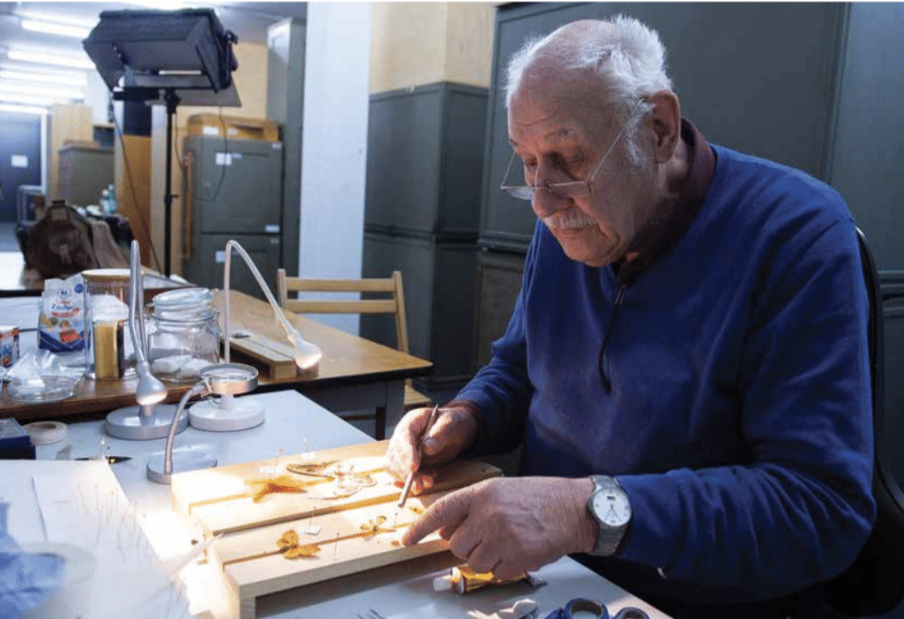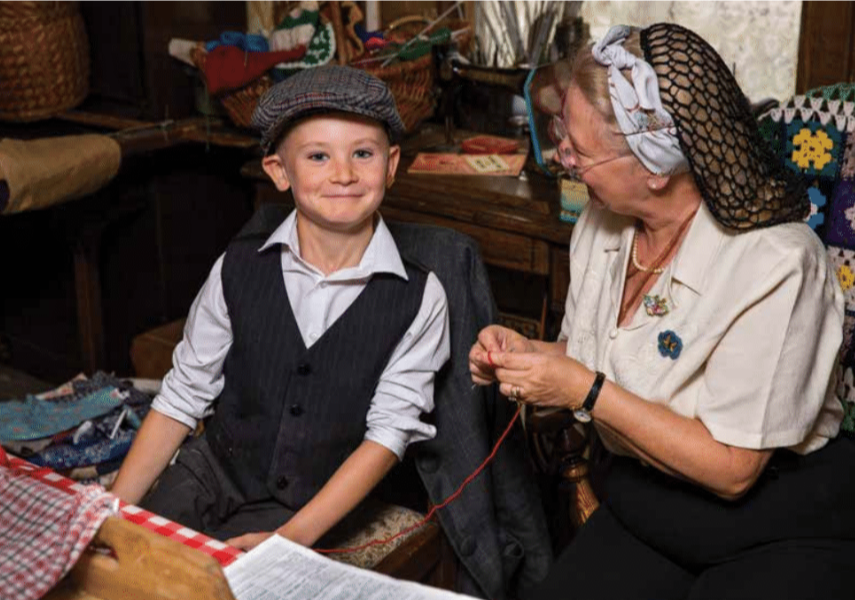
What does museum volunteer retention look like in a post-pandemic world?
This article originally appeared in Museum magazine’s March/April 2024 issue, a benefit of AAM membership.
The pandemic has brought incredible changes to our world over the past four years, including a potentially concerning trend in museum volunteerism. Museums are reporting challenges with recruiting new volunteers along with decreasing retention rates for existing volunteers.
Most museums in the United States rely on volunteers to fulfill crucial roles. In many cases, volunteers outnumber paid staff, meaning a decline in volunteerism could significantly affect museum operations. Museums need to plan for and adapt to these changes in volunteerism to avoid drastic or even catastrophic impacts.
What Does the Data Say?
Volunteering has been declining across many sectors, not just in museums, over the past decade. However, this trend has accelerated notably in recent years. A recent AmeriCorps survey, in collaboration with the U.S. Census Bureau, found that formal volunteering dropped an unprecedented 7 percentage points—from 30 percent of the population in 2019 to 23 percent in 2021.
Research shows that organizations have had trouble bringing their volunteers back after temporary pauses due to COVID, are having trouble finding new volunteers to fill their needs, and are struggling to keep their volunteers onboard. Surveys from the field—in museums and other nonprofits—illustrate what’s happening on the ground.
In a 2022 survey from the American Association for Museum Volunteers, half of the respondents reported that their current volunteer numbers are less than 60 percent of their pre-pandemic numbers. The “2023 Volunteer Management Progress Report” from Volunteer Pro echoes these concerns, with 79 percent of respondents saying they have fewer volunteers than before the pandemic. Additionally, the survey found that volunteer recruitment has become a top challenge, with a significant jump in the number of respondents listing it as their top challenge. Furthermore, one-third of organizations reported retaining volunteers for less than one year. The Volunteer Pro report also finds that the Annual Volunteer Retention Rate—the percentage of currently active volunteers who were active 12 months ago—has slipped to 51–60 percent, compared to 62–65 percent in 2010–2018.
What’s Going On?
While the data undeniably points to a decline in volunteerism, the reasons for this drop are less clear. There are undoubtedly multiple factors leading to these changes, but the following three are having a long-term impact on volunteerism: generational shifts, an economic downturn, and a change in the value of time.
As the data shows, museums are struggling to return to their pre-pandemic volunteer numbers. Museums that before 2020 had volunteers who skewed toward the baby boomer and silent/traditionalist generations (those born before 1964) face challenges getting those volunteers to return. A significant number of older volunteers who took necessary precautions during COVID-19 and stayed home have opted not to return to their previous museum roles. These former roles may no longer fit their needs: they might be too far from home, too public-facing, or too challenging as the volunteer ages.
During economic downturns, volunteerism also takes a hit. The data indicates that this dip is related to a decrease in people’s ability to volunteer due to financial constraints coupled with organizations’ increased need for volunteers due to their own funding cuts.
While there are commonalities in the volunteer management field, museums present specific challenges and opportunities. Unlike organizations whose primary function is to provide life-saving support services, museums and their missions can fall into a “luxury” category for some people. While museum people see their institutions fulfilling vital educational roles, those in survival mode may see otherwise, making volunteer recruitment and retention more challenging. In considering the future of museum volunteer programs, it’s important to keep in mind where museums sit in the hierarchy of needs and what motivates individuals to volunteer their time—and where. These factors inform potential museum volunteers’ decision-making.

Additionally, museums are frequently perceived as affluent, even if this is not the case. Institutions that boast multimillion dollar budgets or are located in communities where individuals are struggling with financial hardship might find it particularly difficult to demonstrate their need for volunteers. Museums must consider whether they are perceived as deserving of that volunteer labor, recognizing that this contribution is not free for the institution or the volunteer. Potential volunteers looking to do good in the world prefer to support organizations whose missions align with their beliefs and values, an increasingly important factor when deciding where to dedicate their time.
What Can Museums Do?
So, how can museums address this abrupt shift? We need to adapt—and quickly. Museum volunteer programs need to comprehensively assess volunteer roles, support structures, and retention methods. They may even need to reconsider how they are measuring success.
It is safe to say that the pandemic pause on life has changed society. It changed our values, our capacities, our work style, and maybe our health or finances. And it seems to have also changed how people volunteer. New volunteers seem to be seeking more flexibility, more skilled roles, and less long-term commitment.
The Minnesota Alliance for Volunteer Advancement’s report on post-pandemic volunteerism supports these observations; 42 percent of its survey respondents in 2022 indicated increased interest in short-term volunteerism in the past year. The survey also found that organizations that reported having the right amount or more volunteers than needed were more likely to have offered increased flexibility for volunteers. Fewer organizations that reported being short on volunteers had employed that strategy.
Further, many museums with longstanding volunteer programs have implemented minimal or no changes to their program structures or processes. While many volunteer managers have made technological changes—from analog to digital—to how they manage and deliver information, program models and systems have remained the same. This stasis may contribute to feelings of frustration among volunteers and could potentially prevent museums from attracting more diverse volunteers. At the very least, it’s possible that volunteer priorities have changed significantly post-pandemic. The organization’s mission, for example, may no longer appeal to them or align with their values.
Museums may need to improve how they communicate the positive impact they have in communities. To create a volunteer program that attracts participants, museums might reconsider their organizational structures and assignments. Providing more flexible training opportunities and involving volunteers in creating positions that best serve the visitor could enhance the value of volunteering. Aligning with the institution’s mission can be an excellent starting point that connects with a new generation of volunteers. That does not necessarily mean tailoring positions to a particular generation but instead addressing the collective need for more flexibility and a greater focus on recognizing volunteer contributions that resonate across generations.
Museums should also revisit their traditional metrics for success for their volunteer programs. Long-accepted metrics focused on the longevity of volunteer service, celebrating those who serve at museums for decades and contribute thousands of hours, may be outdated. Trends indicate that people don’t necessarily want, or find themselves able, to stay in one place for years. Some museums are building volunteer programs that are addressing issues of equity, and they are adapting systems to make it easier to volunteer. They are focusing on the quality of volunteer contributions rather than the number of hours donated.
Museums might also consider staying engaged with volunteers after they leave a museum. Even if they stay in a position for a short time, volunteers are still a museum’s best ambassadors and can help share the organization’s mission within their community. A volunteer could also transition into a paid staff role, adding another dimension to their connection with the institution. This shift will require museums to reevaluate how success is measured, moving away from metrics focused on long-term retention and emphasizing the broader impact of volunteerism on community engagement.

The data and the lived experiences of volunteer managers over the past few years suggest that the changes in how people volunteer are not temporary but a new reality. Museums will need to shift their volunteer programs and expectations to meet these new volunteer norms.
Ideas for Meaningful Change
Whether building from scratch or working with an existing cohort, here are some suggestions for creating a volunteer program that promotes inclusion and belonging, is equitable, and serves the mission of your museum. A well-structured program doesn’t displace staff but instead enhances their work and extends their reach by responsibly placing volunteers in fulfilling and useful roles.
- Rethink when training is offered. A mix of weekend and virtual options in addition to typical workday hours can increase access.
- Streamline onboarding and pare down training and overall commitment to make the best use of volunteer time, prioritizing quality over quantity.
- Create or revise roles to closely support the mission of the institution. Embrace short-term commitments and ensure volunteers understand their impact.
- Consider creating family volunteering opportunities to ensure that people with young children can participate.
- Involve volunteers in your institution’s efforts to build and maintain an inclusive community.
- Acknowledge the value of every volunteer, even if they don’t stay for years.
- Respect volunteers and advocate for their training, development, and recognition.
Resources
American Association for Museum Volunteers
Volunteer Pro, “2023 Volunteer Management Progress Report”
AmeriCorps, “Volunteering and Civic Life in America”
Minnesota Alliance for Volunteer Advancement,
“2023 Post-Pandemic Volunteerism”







